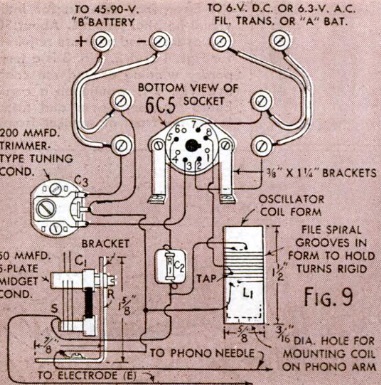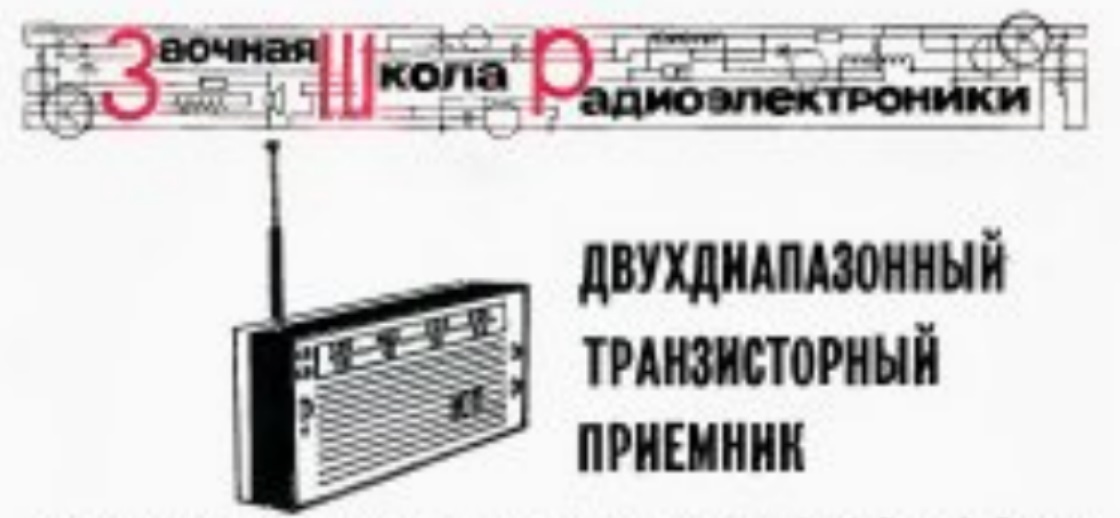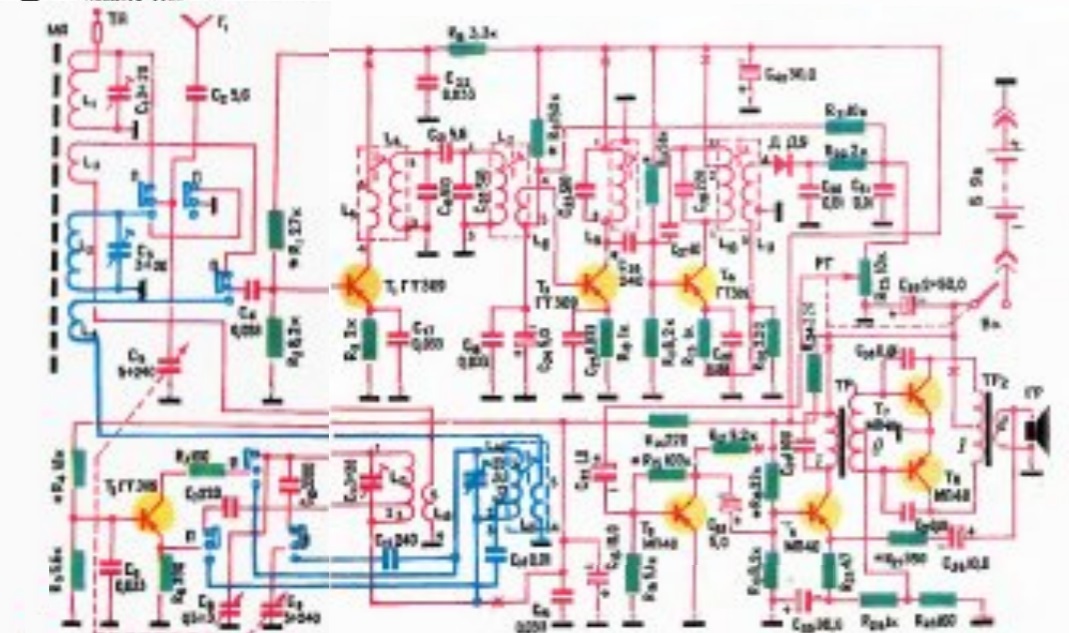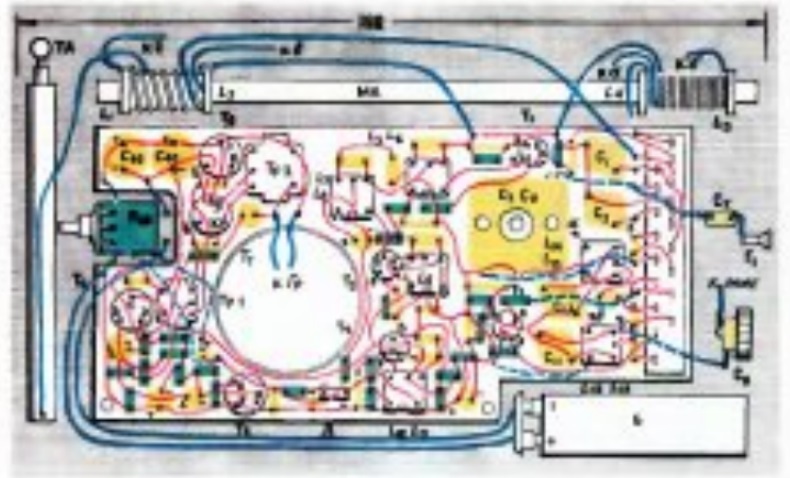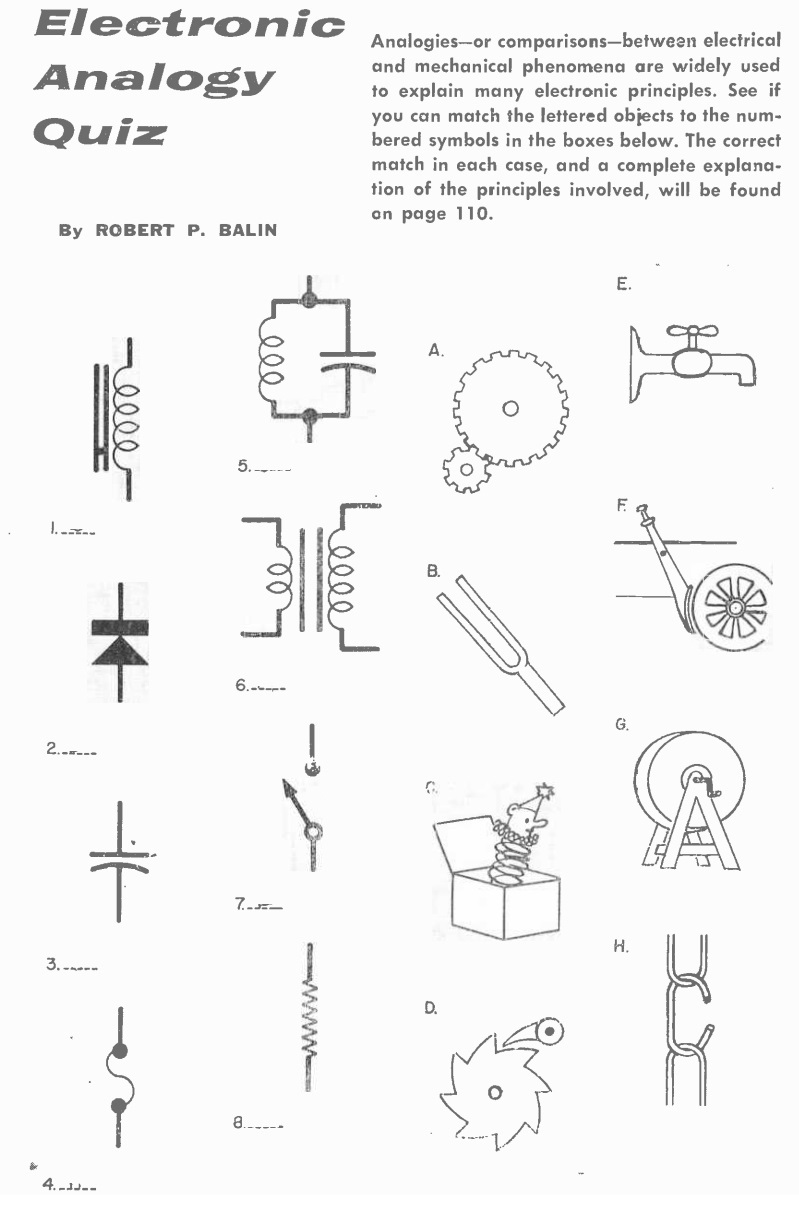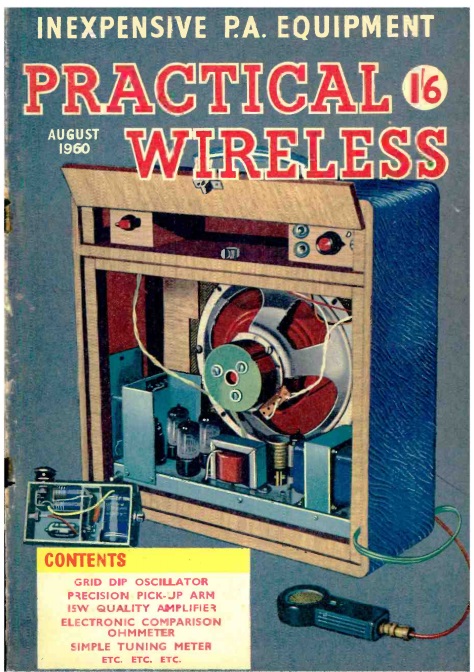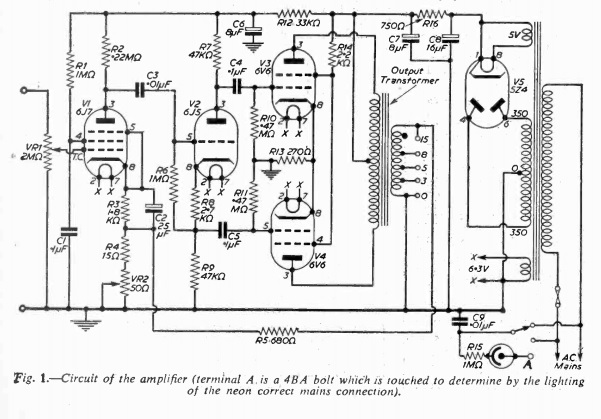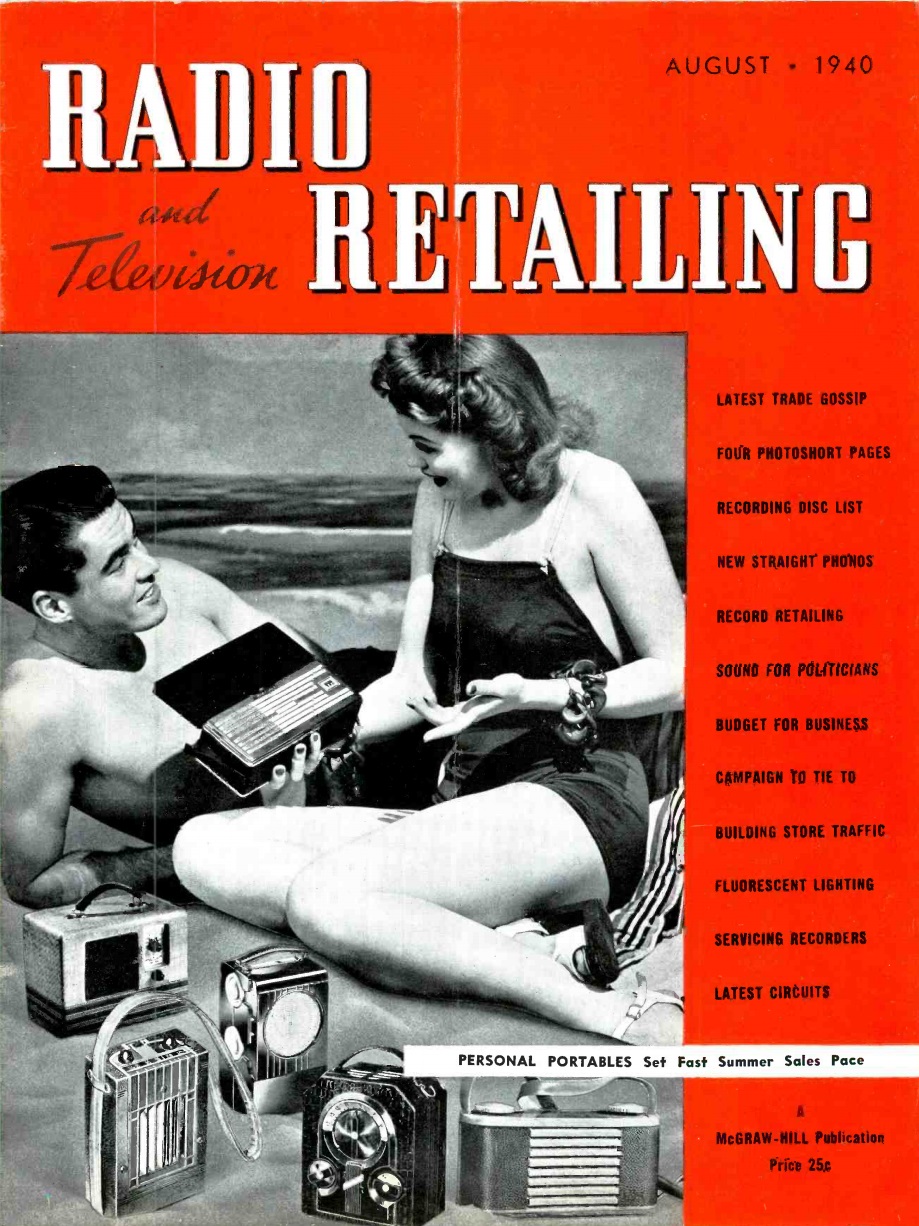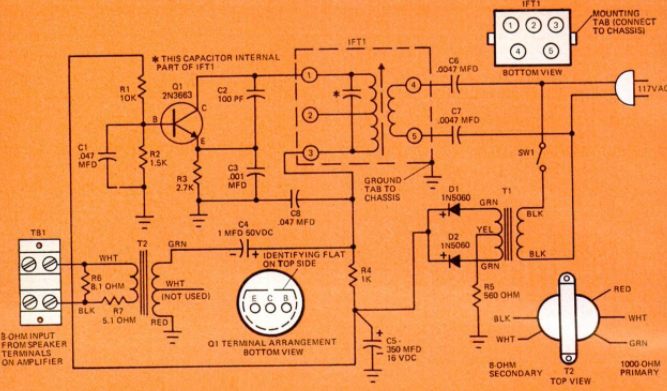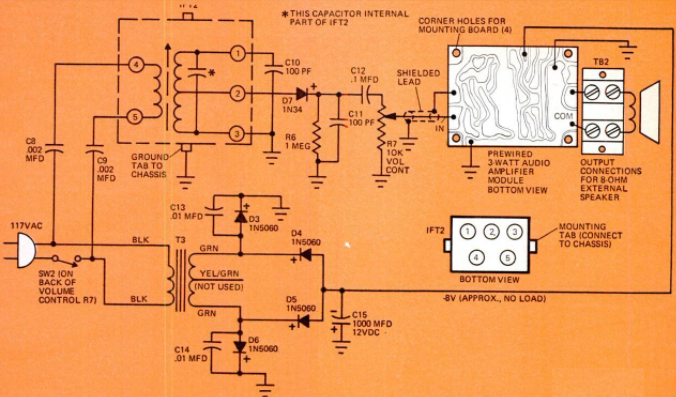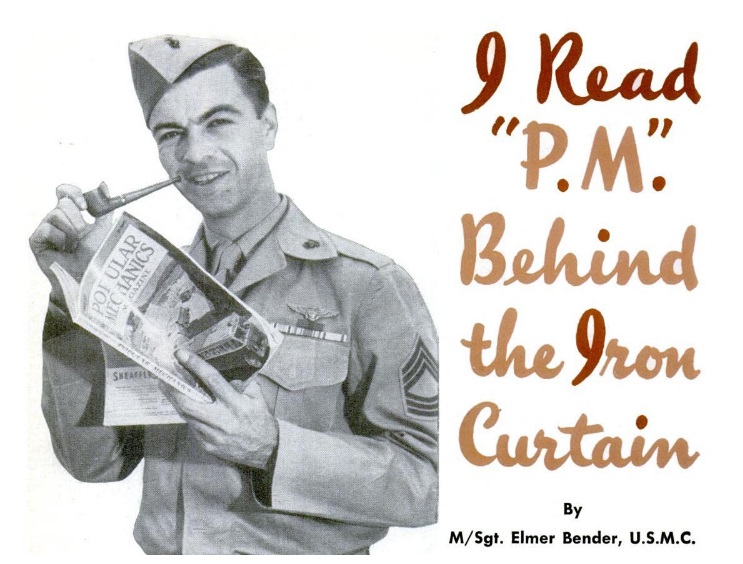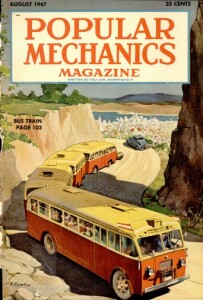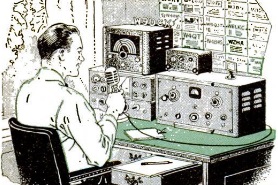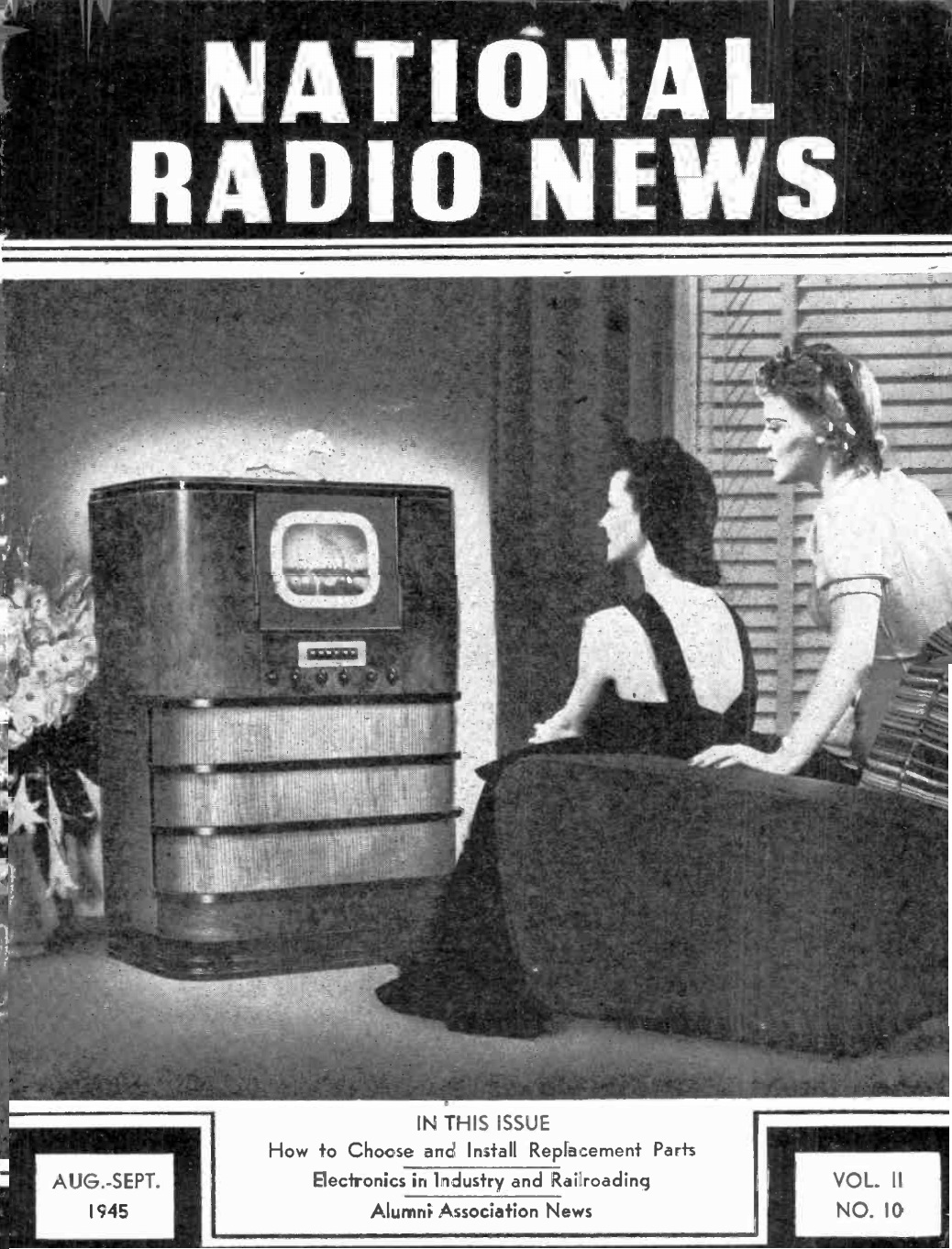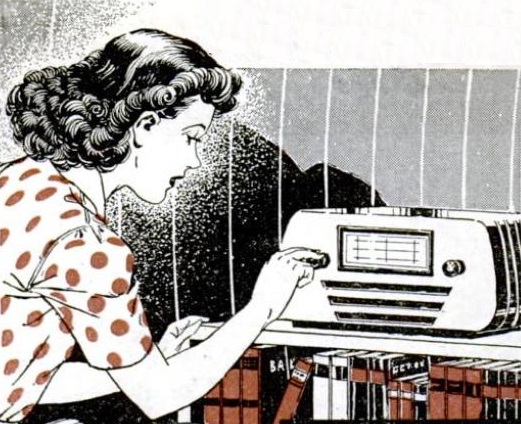
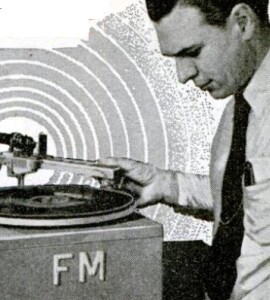 The woman shown above, in the August 1945 issue of Popular Mechanics, appears to be tuning in a program on her broadcast radio. But looks are deceiving, and the set actually tunes the prewar FM band, which covered 42-49 MHz. And she’s not listening to a radio station. Instead, she’s listening to a record being played by the gentleman at left, who is a few feet away.
The woman shown above, in the August 1945 issue of Popular Mechanics, appears to be tuning in a program on her broadcast radio. But looks are deceiving, and the set actually tunes the prewar FM band, which covered 42-49 MHz. And she’s not listening to a radio station. Instead, she’s listening to a record being played by the gentleman at left, who is a few feet away.
Phono oscillators which played records over a standard AM broadcast radio were fairly common, but this one played the records over an FM radio. According to the article, no claim was made that the simple circuit would give absolutely perfect reproduction, but results from the Popular Mechanics laboratory were satisfactory. The set was more a challenge to the experimenter to open up the new field of FM radio.
The whole circuit was remarkably compact, and consisted of a 6C5 triode tube along with a few other components. Even with wartime parts shortages, most of the parts could probably be scrounged up fairly easily. The whole circuit mounted right on the tone arm, which was constructed of hardwood.

